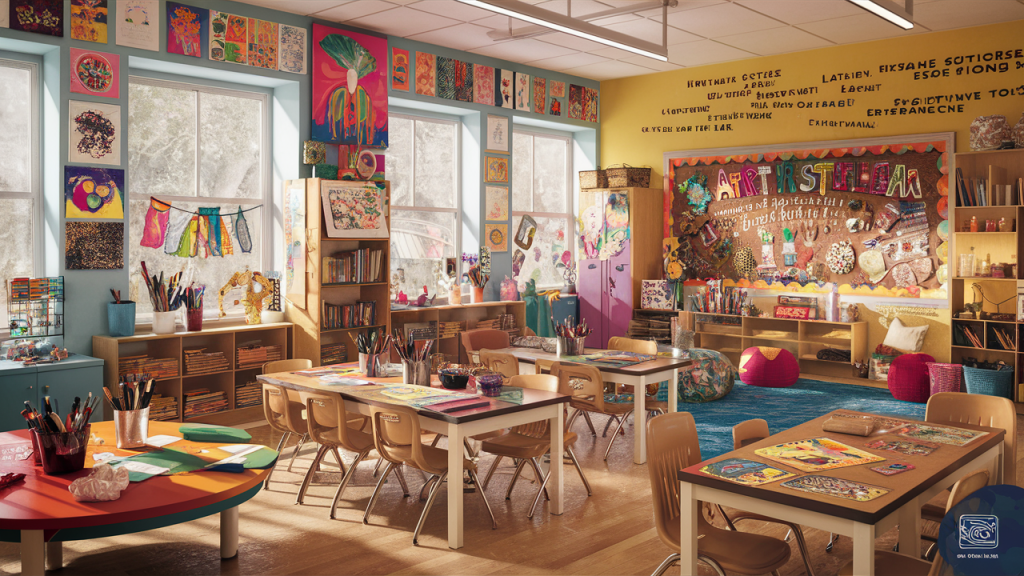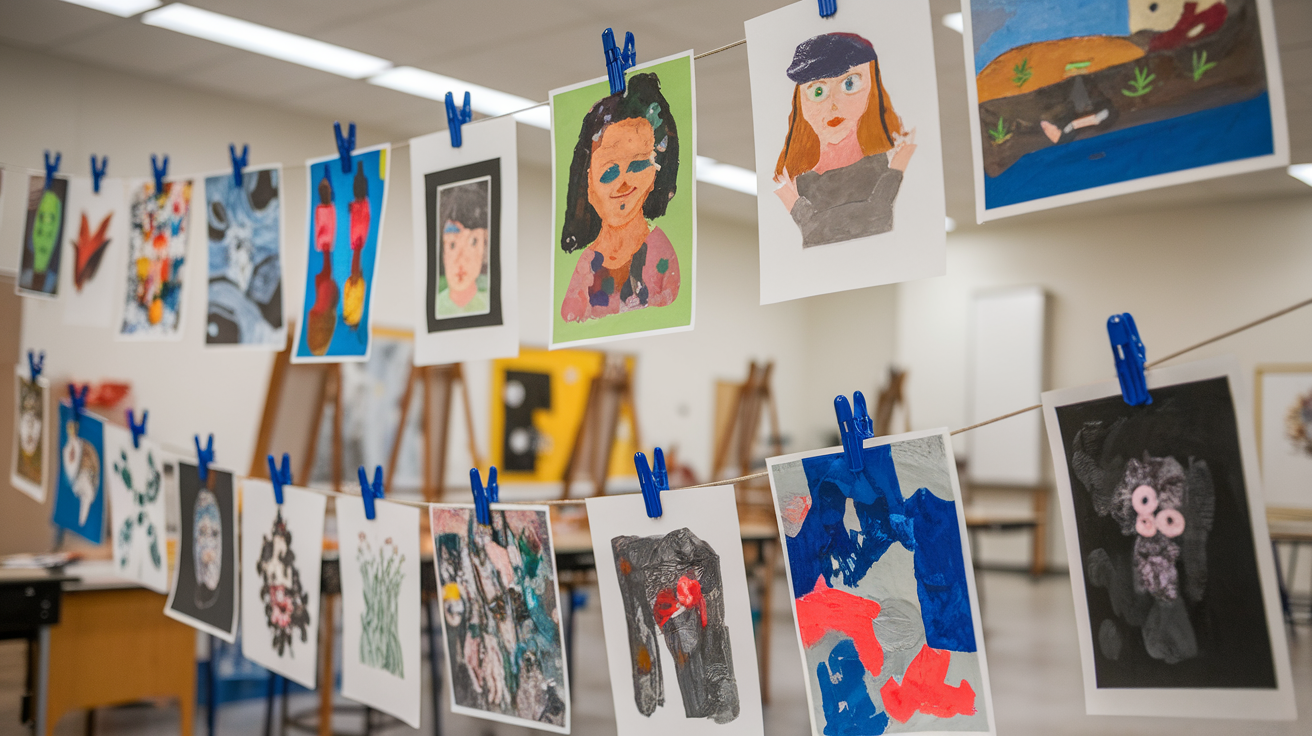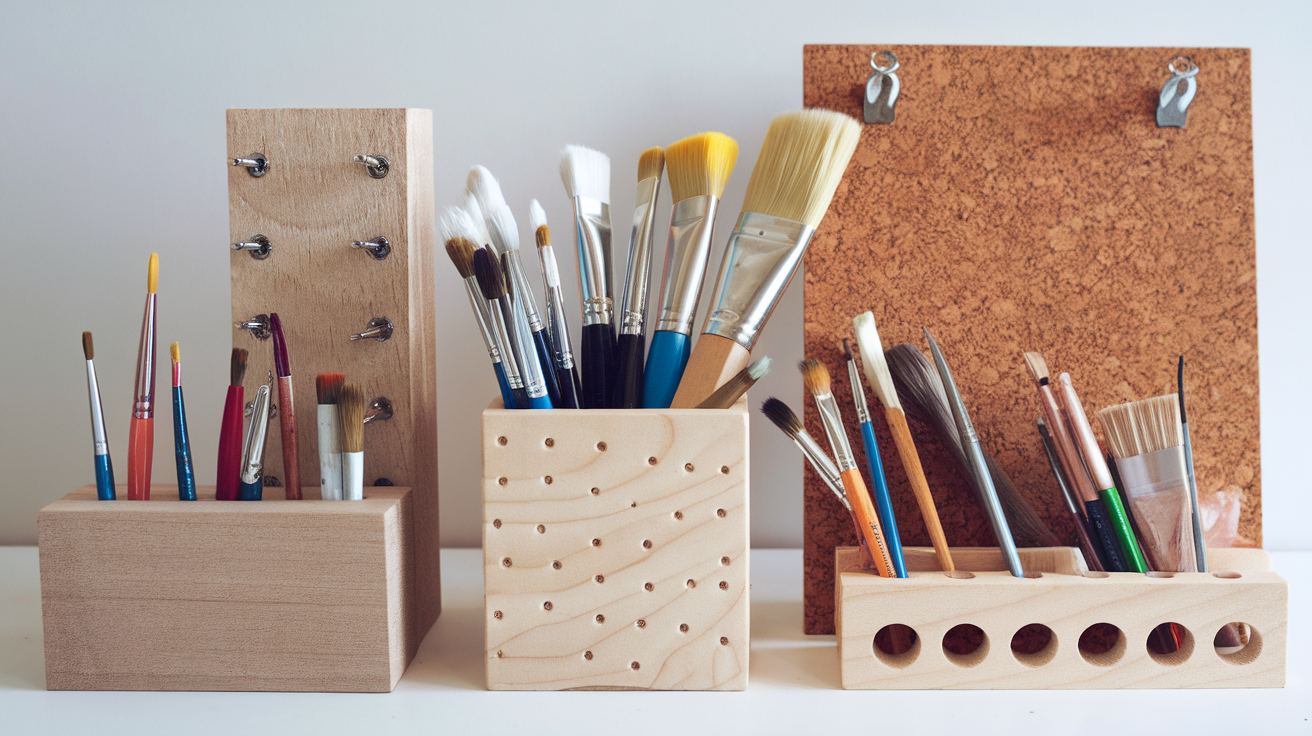I love walking into a colorful and creative classroom. It sets the mood and makes the space feel fun and inspiring. When my art room looks bright and organized, my students feel more ready to create. It also helps me stay excited about teaching.
Decorating an art classroom doesn’t have to be hard. A few simple touches can make a big difference. I like using color, texture, and student work to bring the room to life. It makes the space feel personal and vibrant.
Over the years, I’ve tried many decor ideas; some quick and easy, others more detailed. In this post, I’m sharing my favorite ones. These ideas can help turn any art classroom into a space kids will love. Let’s find some fun, budget-friendly ways to decorate and brighten up your art room!
Why Art Classroom Decor Matters?
The way a classroom is designed can significantly impact how students feel. A bright and colorful room makes kids feel welcome and excited. It shows them that art is fun and that their creativity matters.
When the classroom appears organized and lively, students tend to stay focused. They feel more relaxed and ready to try new things. Good decor also helps them feel proud of their space and their work.
Art classroom decor can also inspire new ideas. A wall of colors, shapes, or famous art pieces can spark a student’s imagination. It encourages them to think outside the box and be bold in their projects. A well-decorated room is not just pleasing—it’s a valuable learning tool. It sets the mood, builds confidence, and helps students enjoy every part of their art journey.
Role of Color and Design in Learning
Colors and designs influence our thoughts and emotions. Blue promotes calm focus, while yellow stimulates energy and creativity.
Research shows that students learn better in spaces with:
- Thoughtful color choices
- Visual interest
- Good organization
- Personal touches
Your room design can actually help students remember art concepts. When they see colors, patterns, and artist examples daily, these ideas sink in without extra effort.
Creative Ideas to Transform Your Art Classroom
Art rooms require a unique touch to foster creativity while remaining practical for everyday use. Let’s see some fresh ways to change your art classroom into a more inspiring and functional space.
1. Interactive Color Wheel Display
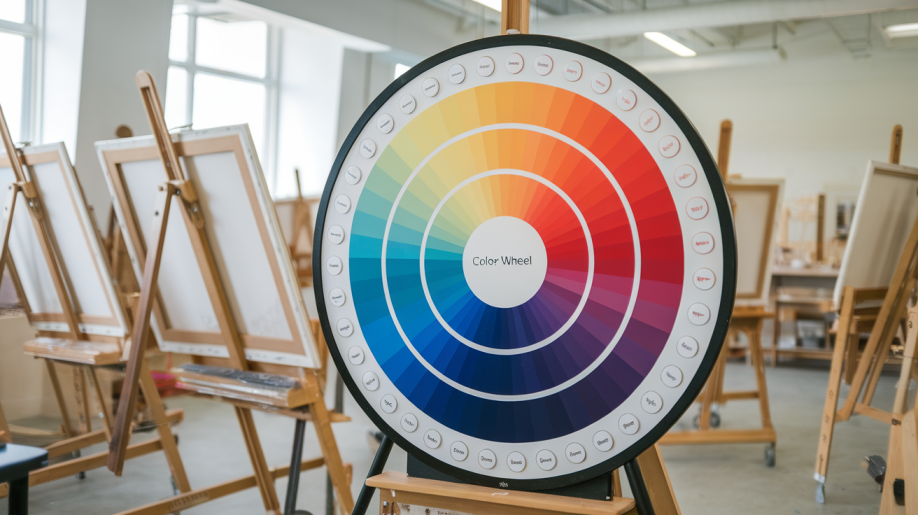
Create a giant color wheel out of cardboard, wood, or foam and place it on a wall where students can reach it. Use velcro or magnets so students can move different color pieces around.
This helps them see how colors mix and where they belong on the wheel. It makes color theory more hands-on and easier to understand. You can also let students use the wheel when picking colors for their own art projects. Having a big, colorful display will also make the room look brighter and more exciting.
2. Famous Artist Quote Wall
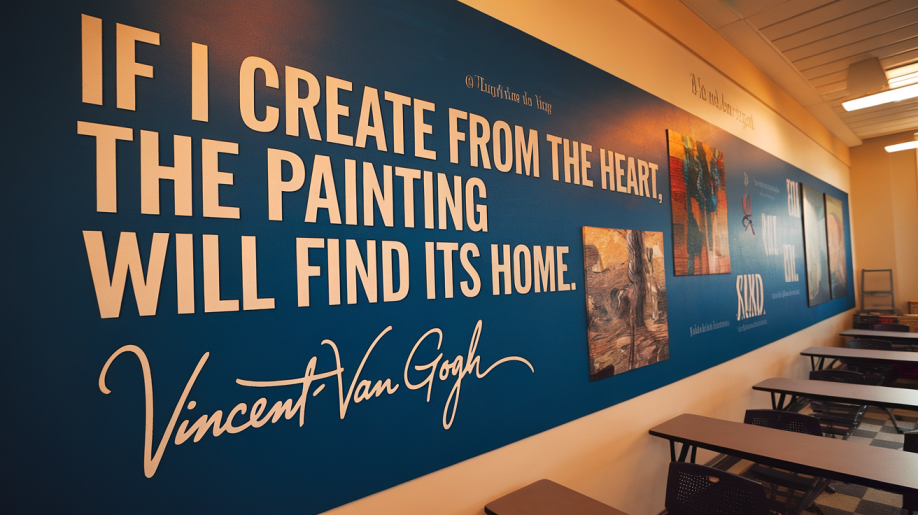
Decorate a wall with quotes from famous artists, written inside colorful paper speech bubbles. Pick short, powerful quotes that encourage creativity and hard work. Every month, switch the quotes to highlight a new artist, so students are always seeing something fresh.
You can add a small picture of the artist next to their quote for a fun touch. This wall will not only inspire students but also teach them a little bit about different artists throughout the year
3. 3-D Paper Art Installations with Paper Sculptures that Pop Out
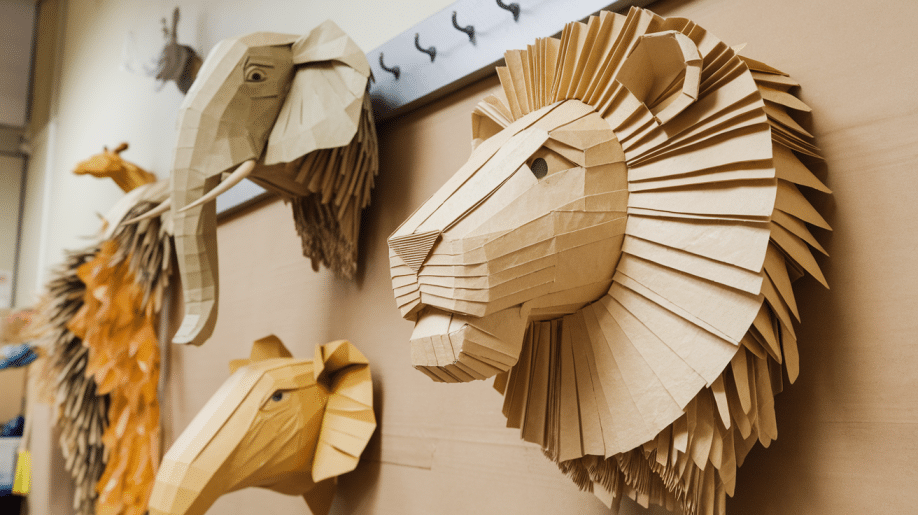
Bring flat walls to life with 3D paper art. Let students design and create big paper sculptures, like flowers, animals, or abstract shapes. Attach them to the walls or hang them from the ceiling to make the room feel alive.
Paper sculptures are easy to make with just scissors, glue, and colorful sheets. Students will enjoy seeing their work become part of the classroom’s decor. It also gives them experience with building 3D forms, which is a fun art skill.
4. Rotating Student Art Gallery

Pick a special wall or space to create a student gallery. Frame each piece of art using simple colored paper to make it stand out. Rotate the art every few weeks to showcase new work.
This gives every student a chance to have their work seen and celebrated. Students will look forward to making their next piece to earn a spot on the wall. It builds pride and encourages effort in every project they do.
5. Mixed Media Inspiration Board
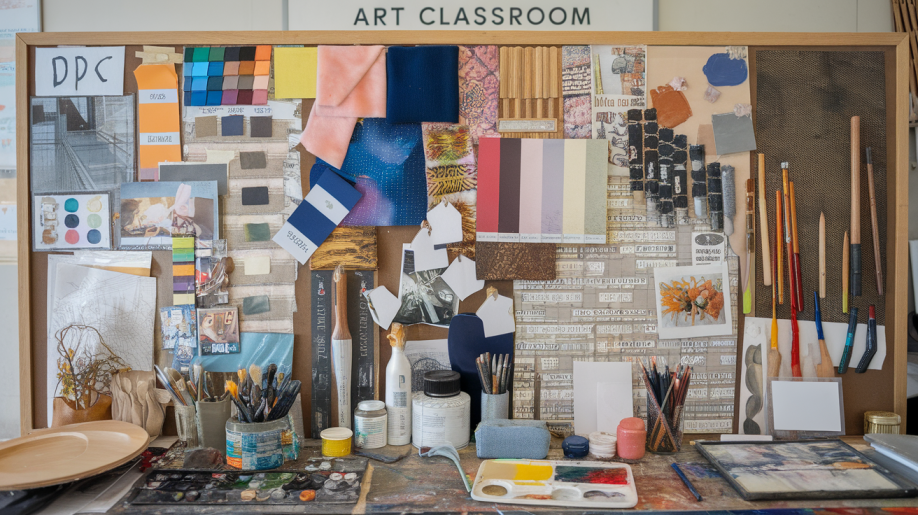
Set up a bulletin board filled with materials such as fabric scraps, ribbons, buttons, yarn, and colorful paper. Students can touch, examine, and feel these materials when they need inspiration for a project.
It’s a fun way to spark their creativity and show them that art can be created using many different kinds of materials. You can add new items over time to keep it interesting. It’s easy to set up and doesn’t cost much if you use scraps and leftovers.
6. Designated Art Supply Zones
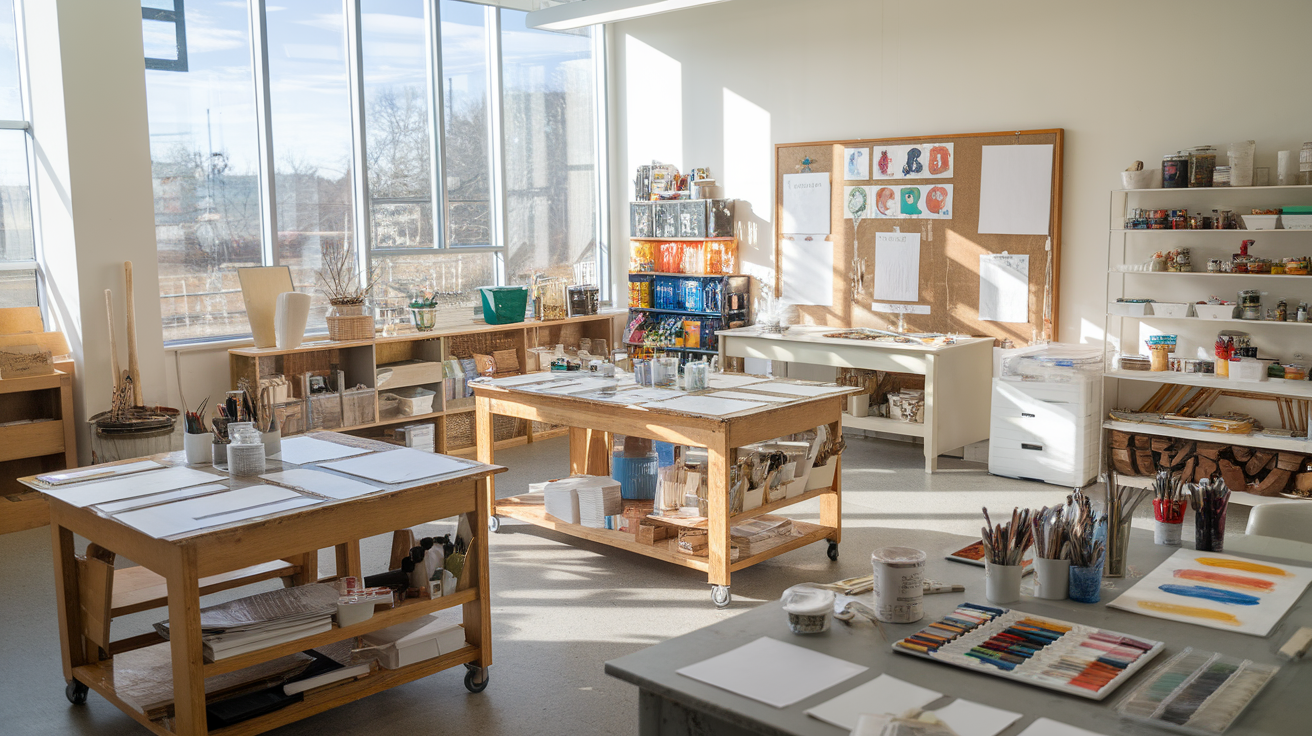
Divide the classroom into different supply zones and label each area with words and pictures. For example, a paint zone, a paper zone, and a brush zone. Use colorful signs and simple images to indicate where items belong.
This helps younger students understand where to find things and where to return them. A clean, organized classroom makes it easier for everyone to work and be creative.
7. Colorful Seating Arrangement
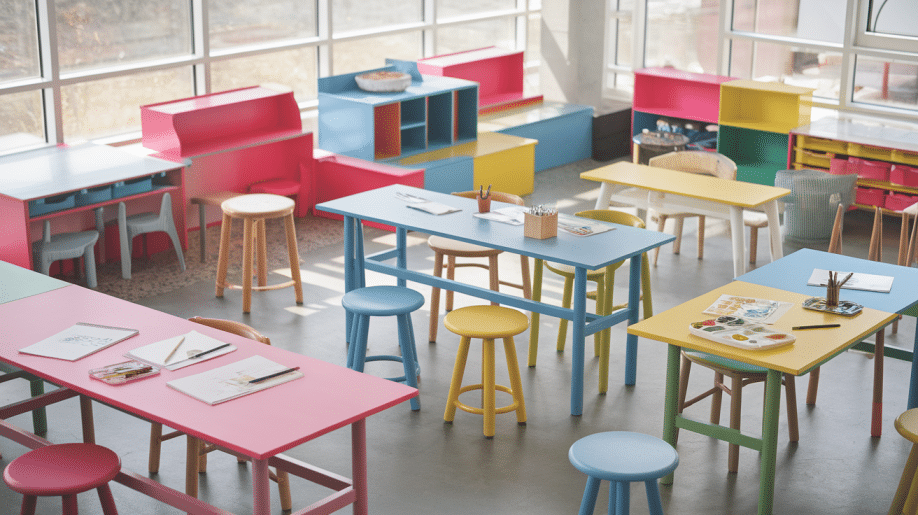
Brighten up your classroom by painting chair backs in different bold colors or adding colorful cushions. This makes the room feel lively and welcoming. You can even assign colors to groups for easy organization. Students will love sitting in bright, happy chairs. It’s an easy change that can really lift the mood of the room.
8. Collaborative Mural Space
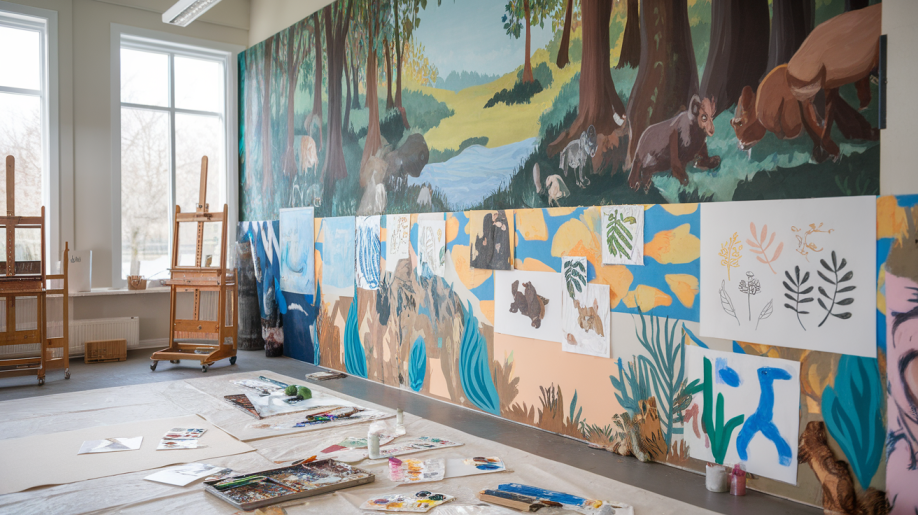
Pick a wall and cover it with butcher paper or large canvas sheets. Invite students to add drawings, words, or designs whenever they have free time. Throughout the school year, the mural will evolve and change as more students contribute their ideas.
This teaches teamwork, creativity, and respect for shared spaces. It also gives students a chance to leave their mark on the classroom.
9. Drying Rack Station with Fun Labels
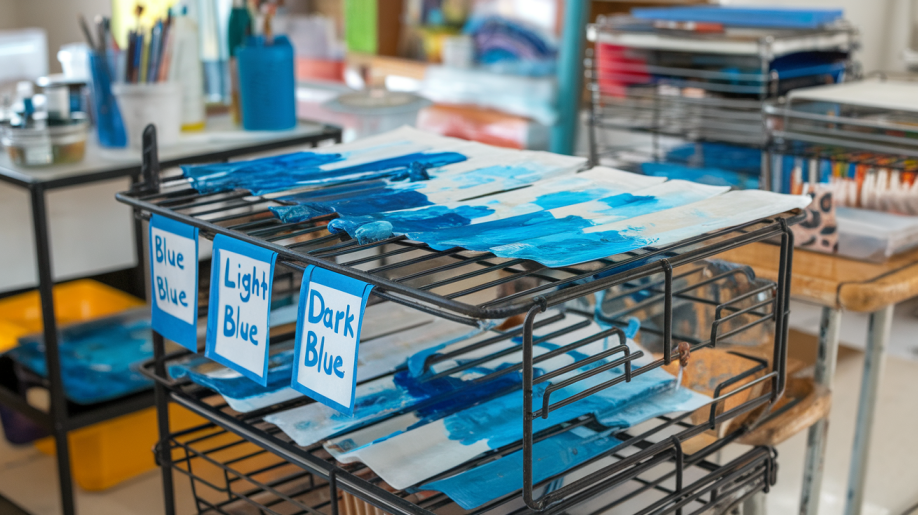
Organize your drying rack area with colorful, easy-to-read labels. Make it clear where small, medium, and large pieces of artwork should go. You can add paint drip designs or colorful arrows to make it more fun.
This will help students place their wet artwork correctly and keep the area neat. A cheerful drying station also makes cleanup time feel less stressful.
10. Mobile Art Cart for Easy Access

Organize your drying rack area with colorful, easy-to-read labels. Clearly indicate where small, medium, and large pieces of artwork should be placed. You can add paint drip designs or colorful arrows to make it more fun.
This will help students place their wet artwork correctly and maintain a neat area. A cheerful drying station also makes cleanup time feel less stressful.
11. Hanging Paper Lanterns with Art Themes
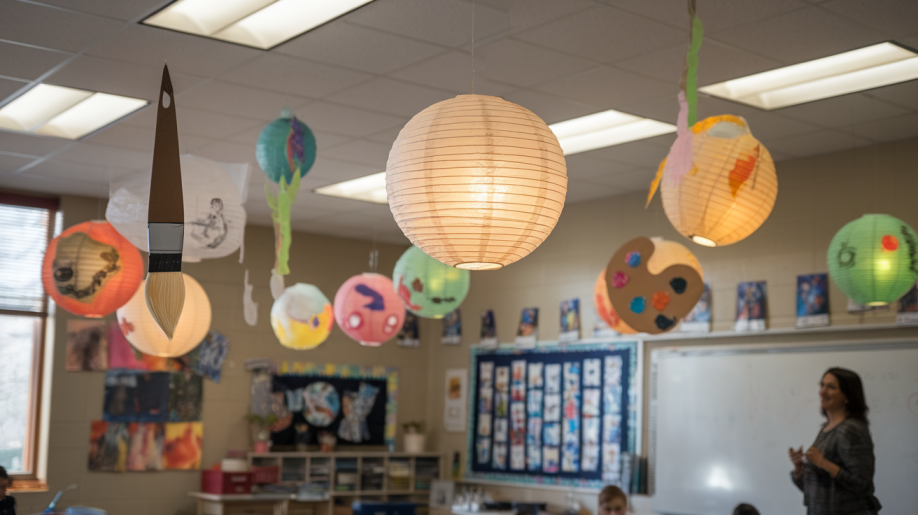
Use plain paper lanterns and let students decorate them based on famous paintings or art elements, such as color, line, or texture. Hang them from the ceiling to create a colorful and exciting atmosphere.
You can also choose different themes each month, like famous artists or seasons. This project is fun for students and teaches them about different art styles. The lanterns will make the classroom feel bright, cheerful, and full of life.
12. Mobile Sculptures Inspired by Famous Artists
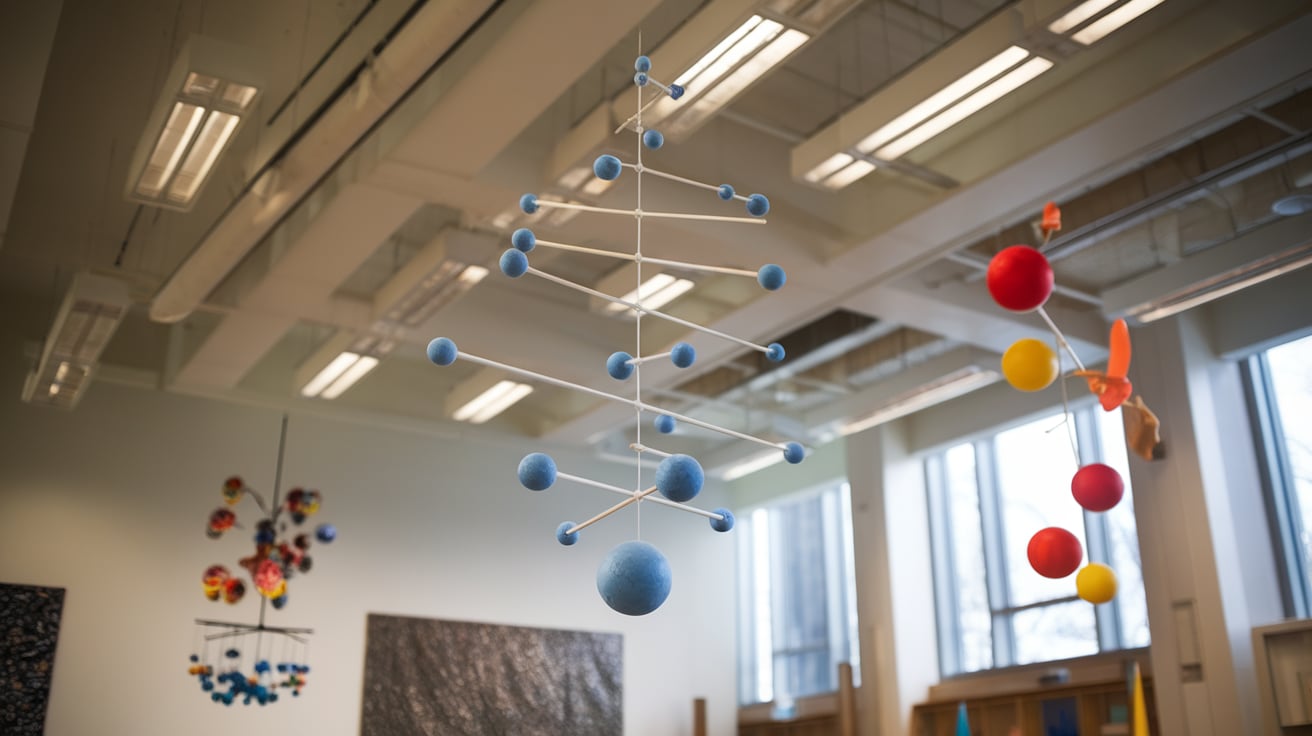
Teach students about artists like Alexander Calder or Joan Miró by letting them create hanging mobile sculptures. Use wire, sticks, paper, and lightweight materials to balance their pieces.
Hang the mobiles around the room for a 3D gallery effect. This helps students learn about design, shape, and balance while having a fun experience. Additionally, the colorful moving art adds a playful and creative atmosphere to the classroom.
13. Paper Chain Garlands in Rainbow Colors
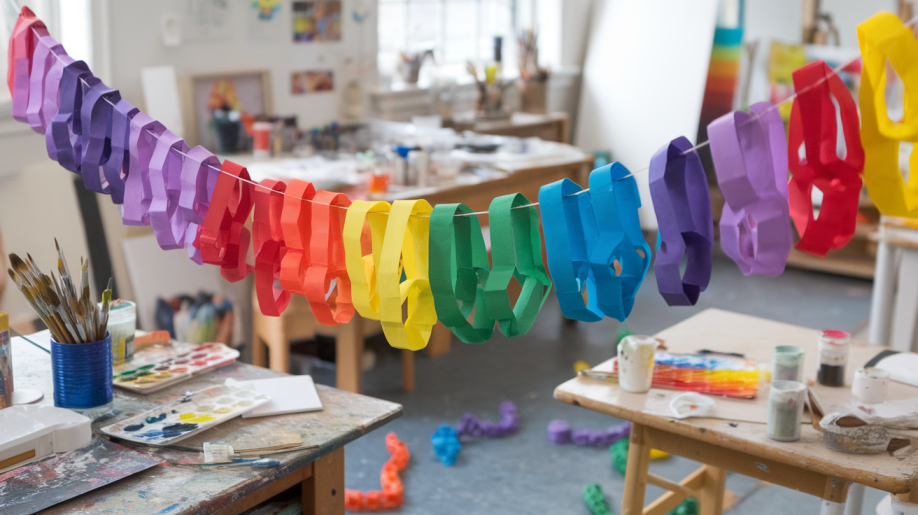
Have students work together to make long paper chains. Arrange the chains in rainbow color order and hang them across the ceiling or along the walls.
It’s a simple project, but it fills the room with color and energy. Students love seeing their work stretch across the space. It also teaches teamwork and color organization in a fun way.
14. Suspended Fabric Drapes for A Cozy Feel
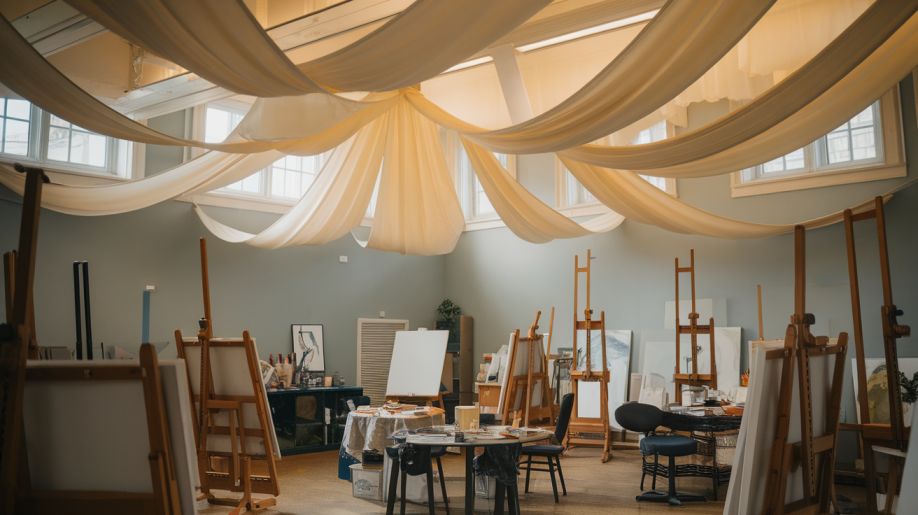
Hang soft, lightweight fabrics across the ceiling or in the corners of the classroom. Use calming colors like light blue, green, or white to create a cozy atmosphere in the room. The fabric helps to soften loud sounds, making the room feel safe and welcoming.
It’s a straightforward way to make a significant change without incurring substantial expenses. Students will love the relaxing atmosphere.
15. Clip String for Displaying Student Work
Stretch strong twine or string across a wall and use clothespins to hang student artwork. It’s easy to add new work and take old work down. This keeps the display fresh and exciting all year. Students feel proud when their work is hanging up for everyone to see. Plus, it’s a flexible and fun way to decorate the room.
16. Labeled Bins with Artistic Icons
Make or print small art-themed icons for your supply bins. For example, use a tiny brush icon for paintbrushes or a pencil for drawing tools. This helps even young students know where to find things. Matching pictures and labels makes cleanup faster and easier. It also keeps your classroom looking neat and fun.
17. Rolling Storage Carts with Color-Coded Drawers
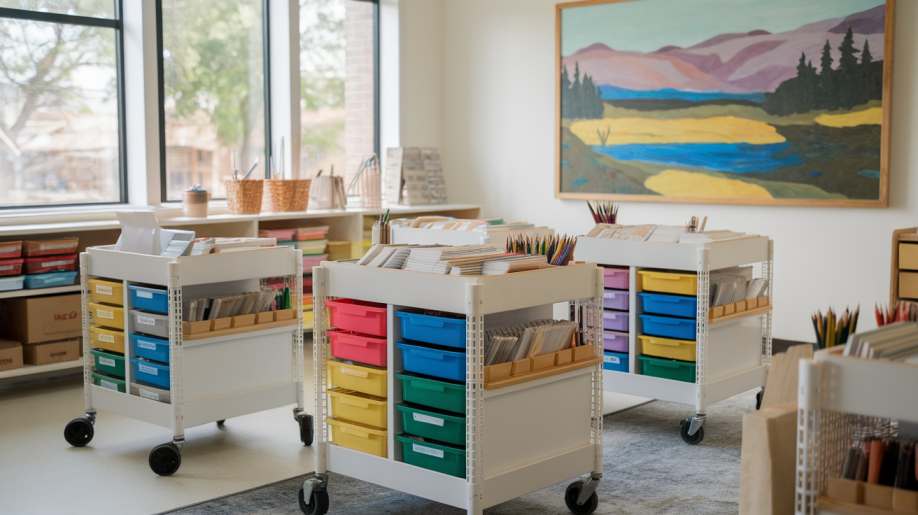
Use a cart with drawers and assign a color to each type of project or class. For example, blue drawers could hold painting supplies, and red drawers could hold drawing paper.
Students can quickly find what they need without needing to ask. Color coding also teaches them to stay organized. It makes the supply time smoother and faster.
18. Pegboard Supply Wall for Easy Access
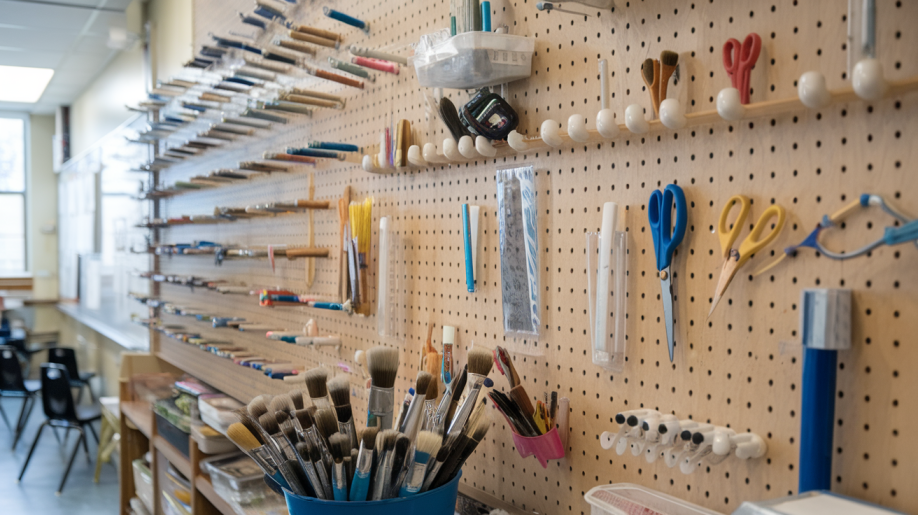
Hang a pegboard on a wall and add hooks to hold tools like scissors, rulers, and paint palettes. Draw simple outlines behind each tool so students know where things go.
Pegboards save space and keep everything easy to see. Students can quickly and easily grab supplies and put them back when done. It also keeps your classroom clean and ready for the next project.
19. Diy Brush and Tool Holders
Collect cans, jars, or containers and decorate them with paint, paper, or fabric. Use them to hold brushes, pencils, scissors, and other small tools.
It’s a fun and easy craft that also helps organize your space. Students can even make their own holders for personal use. This small project adds color and creativity to your classroom shelves.
20. Paint Splatter Storage Shelves
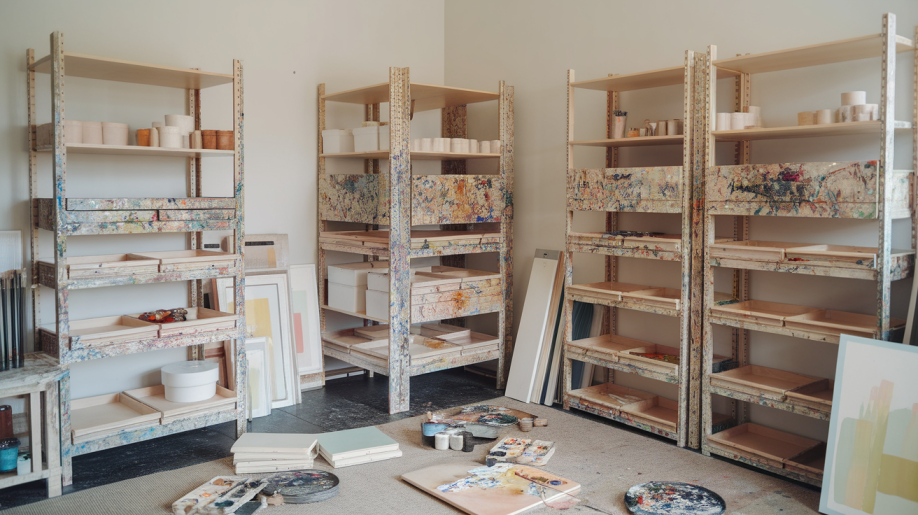
Make your storage shelves more exciting by adding a paint splatter design with bright colors. Students can even help create the splatter patterns.
This fun design hides future stains or wear and tear. It also brings more energy into the room. Storage spaces should be both useful and beautiful!
21. “Artist of The Month” Spotlight Area
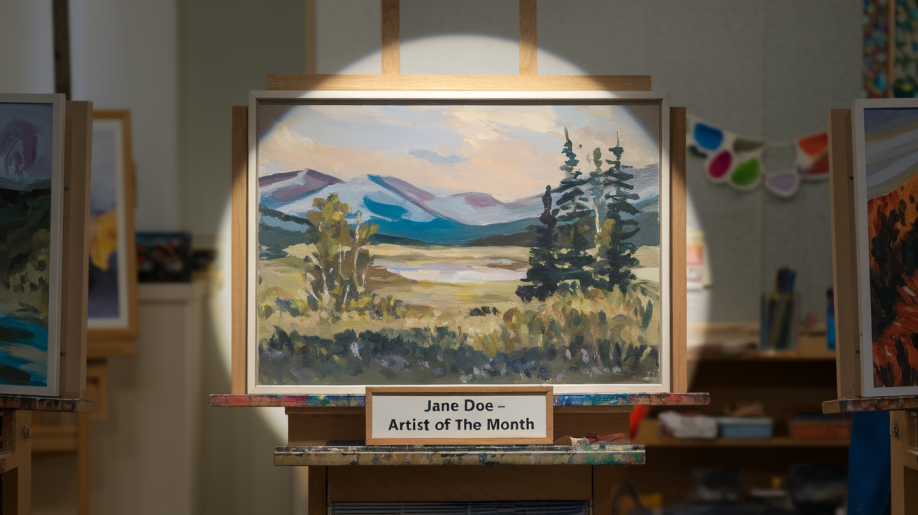
Choose one artist each month and set up a small display about them. Include a photo, a few facts, and copies of their famous works.
Students will learn about different artists all year long. It’s a simple way to connect art history to your daily lessons. Plus, students might find a new favorite artist they never knew before.
22. Step-By-Step Technique Station
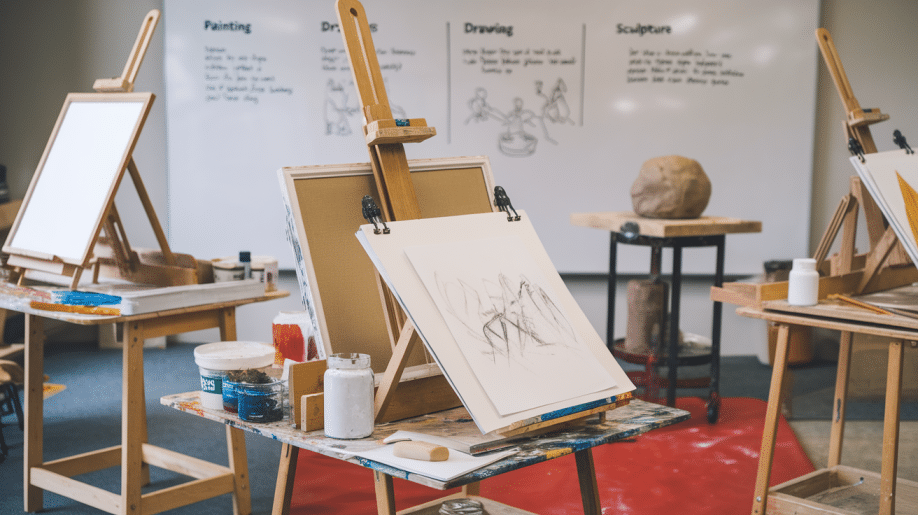
Create a corner that shows different art techniques step-by-step with real examples. Use small boards or posters to break down each step clearly.
Students can look at them while they work to help remember the process. This is very helpful for beginners who are still learning. It’s a great visual tool that builds confidence.
23. Sensory Art Table with Textured Materials
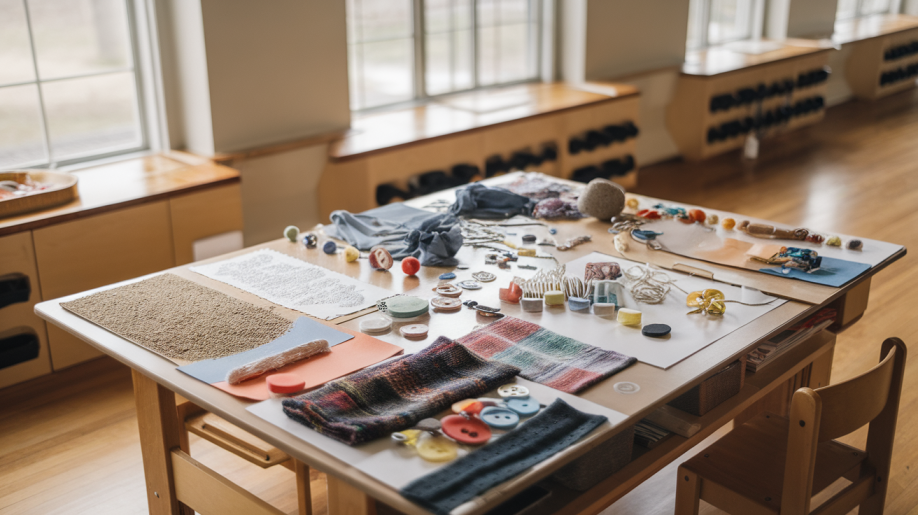
Set up a small table filled with textured items like sandpaper, felt, bubble wrap, and fabric scraps. Let students touch and explore the different textures.
They can also use these materials in their projects. This hands-on table builds sensory skills and inspires creative ideas. It’s fun for all ages and needs very little setup.
24. Collaborative Doodle Wall
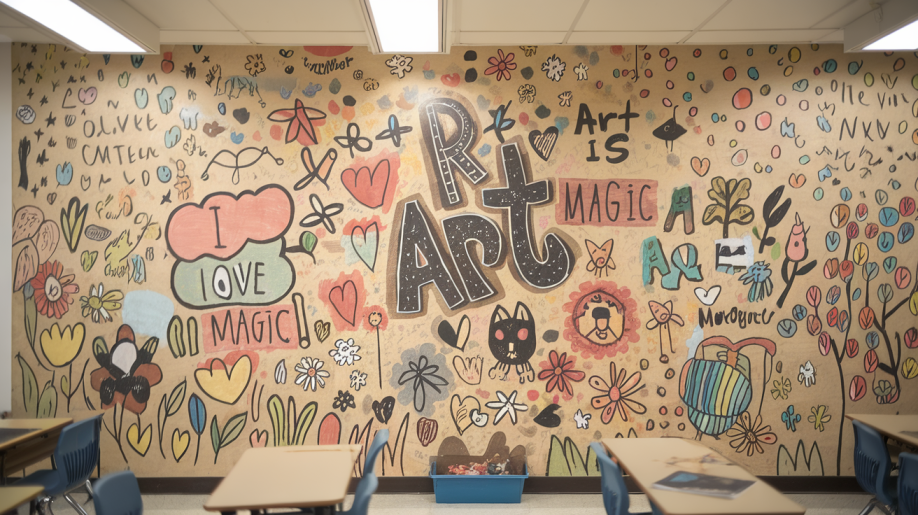
Cover a wall with white paper and let students doodle on it during free time. They can draw little pictures, patterns, or words.
Over time, the wall fills up with a giant collection of ideas. This project teaches sharing, creativity, and respect for others’ work. Every student can add their own special mark.
25. Interactive Color Mixing Chart

Create a fun flip chart or sliding chart that shows how colors mix together. Students can flip different color panels to see what new color they make.
It’s a hands-on way to teach color theory. Visual learners will love seeing the changes happen right in front of them. Plus, it makes learning color mixing feel like a game.
26. Welcome Door with Paintbrush or Palette Design
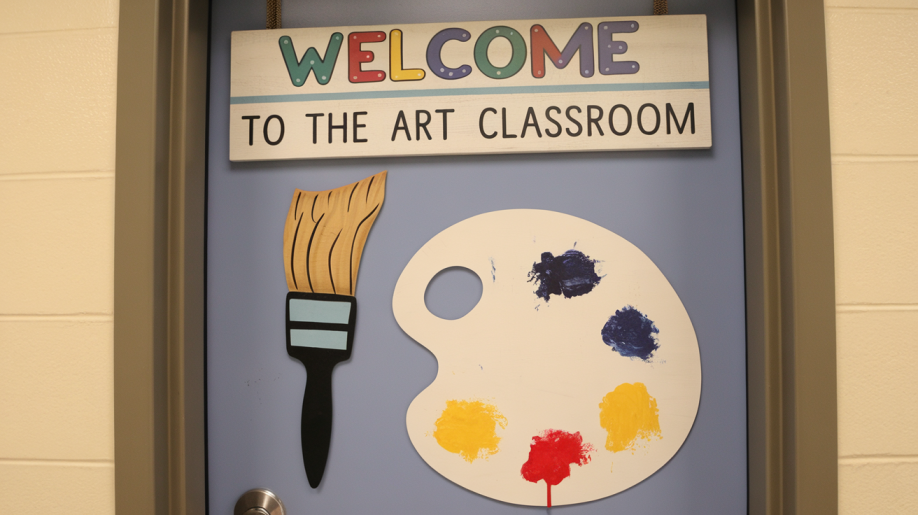
Decorate your classroom door to look like a giant paintbrush, a colorful palette, or an open sketchbook. A bright, artistic door gets students excited before they even walk in.
It shows them that this is a place where creativity matters. You can even change the design for different seasons. A special door makes the classroom feel even more inviting.
27. Seasonal Art-Themed Door Decorations
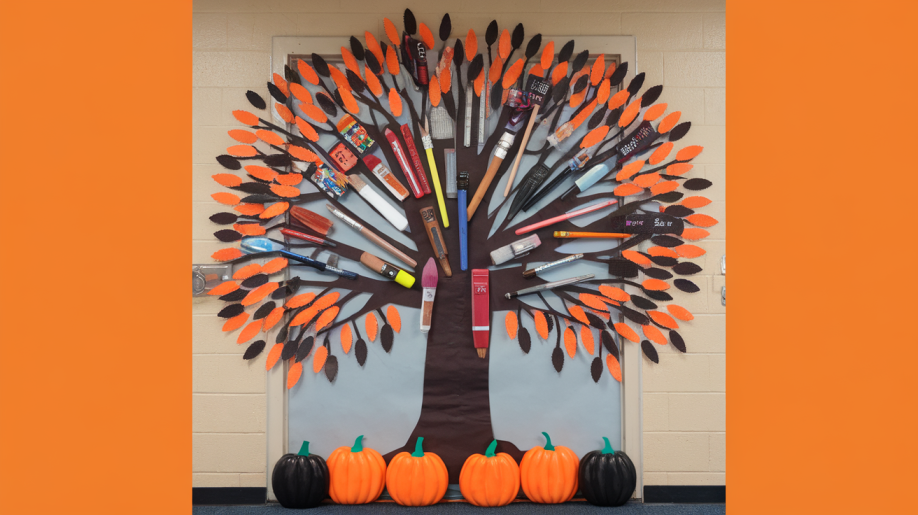
Change your door decorations with the seasons to match holidays, weather, or famous art movements. For example, use fall leaves for autumn or snowflakes for winter.
Tie the themes back to lessons about famous artists or styles. This keeps students curious and makes the classroom feel fresh all year. It’s a small change that has a big effect.
28. Window Clings Featuring Famous Paintings
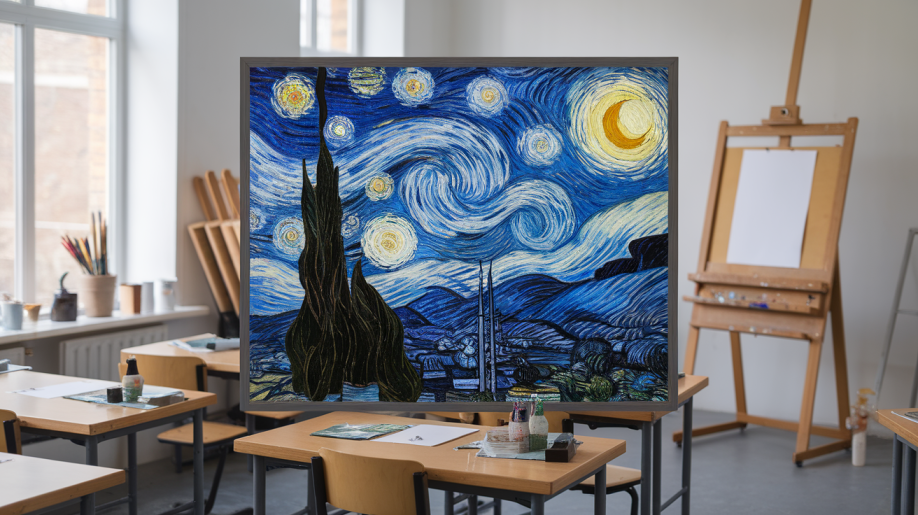
Make or buy window clings that show pieces of famous artworks. Stick them on windows to bring light and art together.
Students get to see and recognize famous art every day. You can rotate the clips based on what you are teaching. It’s an easy way to add culture and creativity to the space.
29. Student-Created Stained Glass-Style Art
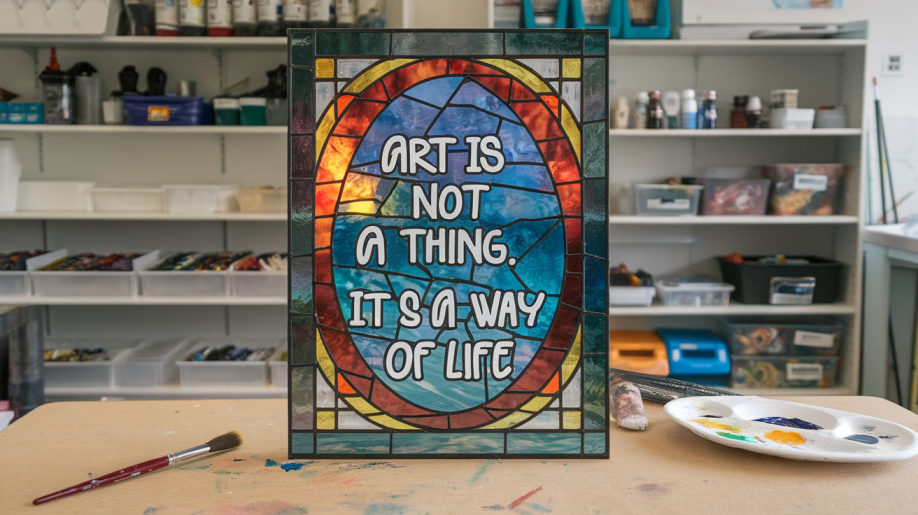
Let students use colored tissue paper and clear contact paper to create “stained glass” art. Hang their finished pieces in the windows so the sunlight shines through the colors.
This project is simple but looks amazing. It teaches about color, layering, and light. Plus, it brightens up your classroom beautifully.
30. “Art in Progress” Sign for an Ever-Changing Display
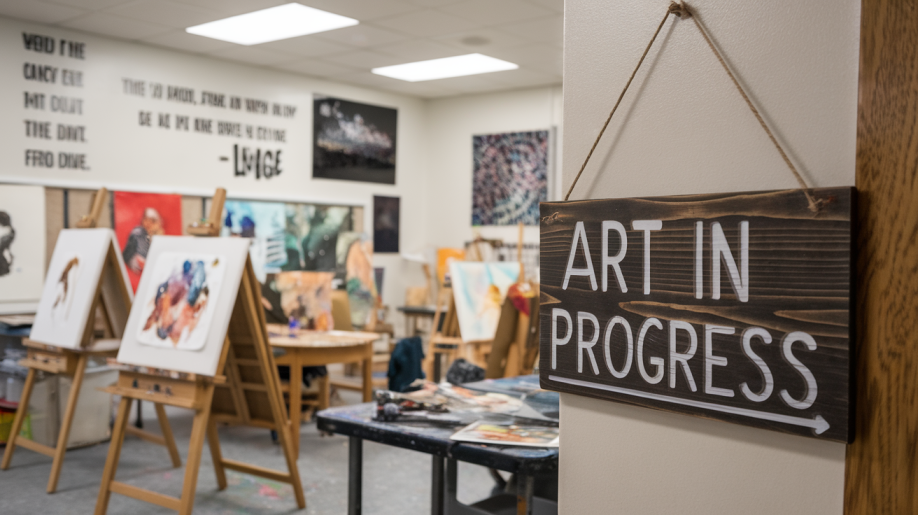
Set up a wall with a big “Art in Progress” sign where students can post unfinished projects. Students can leave notes for each other with positive feedback.
This space reminds students that art is a journey, not just a finished product. It encourages teamwork, sharing, and kindness. Plus, it keeps students excited about their next steps.
Using Color Psychology in Your Classroom
The colors you choose matter more than you might think!
- For active areas, try warm colors like red, orange, and yellow. These energize students and boost creativity.
- Cool colors like blue, green, and purple help students focus and stay calm in quiet work zones.
- Don’t go overboard! Too many bright colors can be overwhelming. Balance is key.
I like to use neutral tones (white, gray, tan) as my base, with pops of bright color as accents.
Maintaining an Inspiring and Organized Space
Decorating your art classroom is only part of the work. Maintaining a clean, organized, and inspiring space all year long is just as important. When students walk into a neat and colorful room, they feel ready to create and learn.
Make small routines a part of your class time. Set aside a few minutes each week for students to help tidy up supplies and straighten displays. Rotate art displays often so the room feels fresh and new. Update bulletin boards, quotes, and student galleries throughout the year to keep students engaged and excited.
Organize supplies with clear labels and an easy-to-use system. When students know where everything belongs, they can work more efficiently and clean up more effectively. A well-organized space saves time, allowing more energy to be devoted to creativity.
Most of all, make sure the classroom feels like it belongs to the students, too. Let them help choose new decorations, themes, and art projects for the space. This makes them feel proud, welcome, and ready to express themselves.
Conclusion
A colorful and creative art classroom can make a big difference for students. It sets a happy tone and helps everyone feel more ready to create. Simple decorations, smart organization, and fun displays can transform any space into a vibrant and inspiring environment.
You don’t need a big budget or a lot of time to make your classroom a special place. Small changes, such as a new art wall or a cozy corner, can have a significant impact. Keeping the space clean, fresh, and inspiring also helps students stay focused and excited to learn.
I love finding easy ways to decorate that show off student work and celebrate creativity. Watching students light up when they see their art on display is one of the best parts of teaching. A welcoming classroom is not just pleasing—it also fosters confidence, joy, and pride in every young artist who walks through the door.


